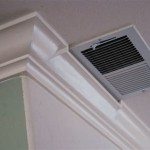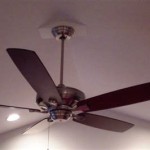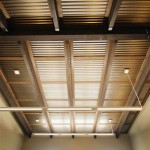Can't Turn Off Ceiling Fan With Remote: Troubleshooting and Solutions
Ceiling fans offer a comfortable and energy-efficient way to regulate indoor temperatures. Many modern ceiling fans include remote controls for convenient operation. However, a common frustration arises when the remote control fails to switch off the fan. This issue can stem from a variety of causes, ranging from simple battery problems to more complex receiver malfunctions. Addressing this problem requires a systematic approach to identify the root cause and implement appropriate solutions.
Understanding the Remote Control System
Ceiling fan remote control systems typically consist of three primary components: the remote control itself, a receiver unit installed within the fan's canopy, and the fan motor. The remote control emits a radio frequency (RF) or infrared (IR) signal when a button is pressed. This signal is received by the receiver unit, which then translates the signal into commands to control the fan's speed, direction, and light functionality. For the system to operate correctly, all three components must be functioning properly and communicating effectively. A failure in any one of these components can lead to the inability to turn off the ceiling fan with the remote.
Radio frequency (RF) remotes offer a greater range and are less susceptible to interference from obstructions compared to infrared (IR) remotes. RF remotes also often utilize coding systems to prevent interference between multiple ceiling fans in close proximity. Infrared (IR) remotes, on the other hand, require a direct line of sight to the receiver and are more susceptible to interference from other electronic devices emitting IR signals. Understanding the type of remote control system used by your ceiling fan can help narrow down potential causes when troubleshooting.
The receiver unit, typically housed within the ceiling fan canopy, is a critical component. It contains the electronics necessary to decode the signals from the remote and control the fan's motor and light. Over time, the receiver unit can experience electrical failures, particularly in areas with voltage fluctuations or power surges. Dust and debris accumulation within the canopy can also contribute to overheating and premature failure of the receiver unit. Regular cleaning of the fan and canopy area can help prevent some of these issues.
Troubleshooting Common Issues
When the remote control fails to turn off the ceiling fan, the troubleshooting process should begin with the most straightforward and easily resolvable issues. This often involves checking the batteries and the basic functionality of the remote.
1. Battery Issues: The most common culprit for remote control malfunction is depleted or improperly installed batteries. Ensure that the batteries are fresh, of the correct type (as specified in the remote's manual), and installed with the correct polarity (+/-). Even if the remote appears to be functioning (e.g., the light on the remote illuminates when a button is pressed), weak batteries may not provide sufficient power to transmit a strong enough signal to the receiver unit. Replace the batteries with a new set and test the remote's operation. If the problem persists, proceed to the next troubleshooting step.
2. Remote Control Functionality: Verify that the remote control is actually emitting a signal. While a visual indication (like an LED light on the remote) may suggest functionality, it doesn't guarantee a signal is being transmitted. If you have a smartphone with an infrared camera (often found on older models), you can point the remote at the camera and press a button. If the remote is emitting an IR signal, you should see a faint white or purple light on the phone's screen. (Note: this test only works for IR remotes, not RF remotes.) If no signal is detected, the remote itself may be faulty, requiring replacement.
3. Signal Interference: Radio Frequency (RF) remotes can sometimes experience interference from other electronic devices operating on the same frequency. Common sources of interference include cordless phones, Wi-Fi routers, and other RF-controlled devices. Temporarily turn off or move potential sources of interference to see if the remote's functionality improves. Similarly, Infrared (IR) remotes can be affected by bright sunlight or other IR light sources. Ensure that there is a clear line of sight between the remote and the receiver, and that no other IR-emitting devices are interfering with the signal.
Advanced Troubleshooting and Solutions
If the basic troubleshooting steps fail to resolve the issue, more advanced investigation is required. This often involves examining the wiring, the receiver unit, and the fan motor itself.
1. Circuit Breaker and Wiring: Before undertaking any electrical work, ensure that the circuit breaker controlling the ceiling fan is switched off. Verify that the wiring connections within the fan canopy are secure and properly insulated. Loose or corroded connections can disrupt the flow of electricity to the receiver unit and fan motor. Carefully inspect the wiring for any signs of damage, such as frayed insulation or exposed wires. If any damaged wiring is found, it should be repaired or replaced by a qualified electrician.
2. Receiver Unit Issues: The receiver unit is a complex electronic component that is susceptible to failure over time. Overheating, power surges, and dust accumulation can all contribute to receiver malfunction. To test the receiver, you may need to bypass it temporarily. This involves directly wiring the fan motor to the power supply, effectively eliminating the remote control functionality. Caution: Bypass testing should only be performed by individuals with experience in electrical wiring. Incorrect wiring can damage the fan motor or create a safety hazard. If the fan operates normally when the receiver is bypassed, this indicates that the receiver unit is faulty and needs to be replaced. Replacement receiver units can often be purchased online or from lighting fixture stores.
3. Frequency Synchronization: Some ceiling fan remote controls require synchronization with the receiver unit. This is particularly common with RF remotes to prevent interference between multiple fans. The synchronization process typically involves pressing a button on the receiver unit (often located within the canopy) and then pressing a button on the remote control. Consult the ceiling fan's instruction manual for specific synchronization instructions. Incorrect synchronization can prevent the remote from communicating with the receiver, leading to the inability to control the fan.
4. Capacitor Problems: The fan motor relies on capacitors to start and maintain its rotation. A failing capacitor can cause the fan to run erratically, or not run at all. While a failing capacitor itself would not directly prevent the remote from turning the fan *off*, it can cause other symptoms that might be mistaken for a remote control issue. Capacitors can be tested with a multimeter, but this requires knowledge of electrical testing procedures. If you suspect a capacitor problem, consult with a qualified electrician.
5. Fan Motor Failure: Though less common, a failing fan motor can also contribute to control issues. A partially failed motor may draw excessive current, potentially overloading the receiver unit and preventing it from functioning correctly. If the fan motor is making unusual noises or is not rotating smoothly, it may be a sign of motor failure. In this case, replacing the fan motor or the entire ceiling fan may be necessary.
6. Remote Control Programming (DIP Switches): Older RF remote control systems may use DIP switches to set a unique frequency code for each fan. These DIP switches are typically located on both the remote control and the receiver unit. Ensure that the DIP switch settings are identical on both the remote and the receiver. If the DIP switch settings are mismatched, the remote will not be able to communicate with the receiver. Consult the ceiling fan's instruction manual for the correct DIP switch settings.
It is important to prioritize safety when troubleshooting electrical issues. Always disconnect the power supply to the ceiling fan before performing any wiring or component inspections. If you are not comfortable working with electrical wiring, it is recommended to consult with a qualified electrician to diagnose and repair the problem. Attempting electrical repairs without proper knowledge and experience can be dangerous and may result in injury or property damage.

Ceiling Fan Won T Turn Off Here S How To Fix It Funktional Home

Ceiling Fan Remote Troubleshooting The Home Depot

Troubleshooting Your Remote Controls Step By Hampton Bay Ceiling Fans Lighting

Wynn Ceiling Fan Turns On By Itself Fixed

Troubleshooting Your Remote Controls Step By Hampton Bay Ceiling Fans Lighting

Ceiling Fan Remote Troubleshooting The Home Depot

Harbor Breeze Ceiling Fan Remote Program Dimmer And Conflict Fix

Seneca Ceiling Fan Light Won T Shut Off W Remote Control Doityourself Com Community Forums

Harbor Breeze Ceiling Fan Remote Not Working Definitive Troubleshooting Guide Replacements Hampton Bay Fans Lighting

Most Common Ceiling Fan Problems
Related Posts








